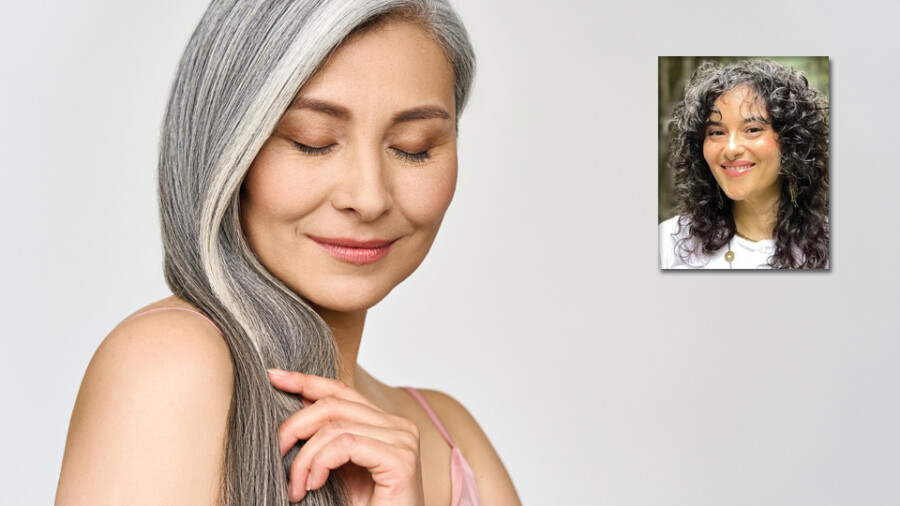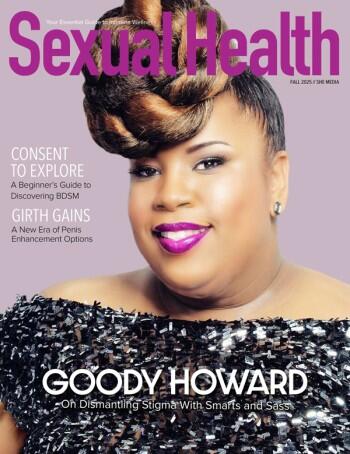The North American Menopause Association states that by 2025, approximately 1.1 billion women will be postmenopausal. This includes some Gen Xers and millennials around the age of 40 who will be in some phase of perimenopause, a time when they have periods, deep period changes and various symptoms associated with menopause.
What does that mean for adult retailers? Expect retail customers to be more aware of physical, mental and emotional changes, as this life-changing transition may be happening earlier than one might expect. Fortunately, the rise of femtech has brought a range of health software and tech-enabled products that cater to female biological needs, including more robust educational resources for the menopausal journey.
Older women want educated, thoughtful and empowering service.
The femtech industry is already seeing massive crossover from the mainstream health and wellness industry, particularly period-tracking apps for sexual wellness, fertility and now menopause. For example, Balance.com is led by Dr. Louise Newsom, who has helped bring menopausal health issues to the fore in the British Parliament. The Balance App connects people with resources and information to help determine where they are in their fertility journey, and specifically perimenopause and menopause.
In terms of tangible products, kegel tools like Perifit are often connected to apps that guide people through kegel exercises while incorporating gamification. Another femtech product, the Milli Vaginal Dilator, has optimized a classic device that has historically been cumbersome. We are seeing more simplified, discreet, adaptive and life-changing tech for all people with vaginal discomfort, regardless of age. In turn, the data collected with various apps can be shared with medical providers to further inform individual healthcare needs.
In an article for Menopause, the journal of the North American Menopause Society, Dr. Stephanie Faubion notes an estimate that the global femtech industry will be worth $50 billion by 2025. Dr. Faubion writes that women over 40 “are active and vibrant and do not want to be sidelined by hot flashes, sleep disturbances, mood issues, brain fog, or bladder leakage, and they want to remain sexually active.”
Here are three significant reasons why retailers should take a proactive approach to menopause education.
Sooner Than You Think
Your in-store and virtual customers aged 38-45 may already be feeling the shifts in their hormones due to early perimenopause. Sure, they may not have debilitating hot flashes or brain fog, but heavier periods and subtle shifts in their libido may have begun. Many people associate menopause with gray hair when in actuality, the early 40s are a time ripe for drastic hormone shifts and changes even with close to a decade of menstruation yet to go.
While medical expertise is needed to determine whether someone has approached perimenopause, you may have customers in their late 30s who ask for products that might help with discomfort during sex, self-pleasure or penetration. They may not even know that perimenopause is in progress due to common misconceptions about age. Having a baseline understanding of the spectrum of perimenopausal physical symptoms will equip business owners and retail staff to provide the best experience for customers. There are approximately 34 symptoms of menopause, ranging from hot flashes and dizziness to joint pain and tinnitus — hearing ringing or other noises in the ears. It might also be beneficial to understand various side effects of endometriosis and PCOS. For a definitive diagnosis, however, refer customers to a medical practitioner or free/low-cost local clinics.
Growing Through It
Knowing how to better support perimenopausal customers without communicating ageism or shame is essential. Take for example a post-menopausal 70-year-old, possibly still employed, maybe with a partner or not, and still sexually active. Initially, some may think “How cute” or “Really? Sexually active?” Remember, people in that age range were teens in the ’60s during the free love movement, as well as the invention of the pill. As people age, sexual desire does not vanish. However, physical limitations can be the primary inhibitor of sexual activity. For customers with joint or mobility issues, consider dedicating a section of your store to products designed for simplicity of use, or products that do the heavy lifting with more intense vibration.
While the media uses words like “ageless,” “anti-aging” and “young,” it is the demographic of Gen X that has the money, time and energy to invest. Much like the movement towards size inclusivity, we need to embrace the erotic appeal of life wisdom, which calls on us to understand body changes and access to more accommodating options. Older women want educated, thoughtful and empowering service.
There is a real opportunity to deliver meaningful impact for customers experiencing perimenopausal symptoms. More health providers are taking their practices online, and celebrities such as Gwenyth Paltrow, Drew Barrymore and Cameron Diaz are investing in menopause companies and services. Hopefully this will bring greater awareness to this chapter of a menstruating person's life.
Pairing the Right Products
Invest time into learning about and offering pleasure tools that can teach a woman about her pelvic floor while simultaneously bringing pleasure and tension release. Most kegel products can teach the basics of pelvic floor strengthening by showing consumers how to release and relax the pelvic floor. Analog, glass, steel and silicone wands with an exaggerated “S” shape are usually ideal.
Other staples for this transition are body-safe lubricants and daily moisturizers. Vaginal moisturizers can be essential for hormone fluctuation after people stop having periods, regardless of age. Not all vaginas are “WAP” all the time! In fact, most of them could use a little support on occasion. There are even some people who have such intense dryness that wearing underwear can cause pain and irritation. The point is to get to know the differences between lube and moisturizer. Don’t be shy about introducing plant-based lubricants that can help increase pleasure and relaxation, such as high-quality CBD-infused lubes. Customers want to feel “normal,” that life transitions are exciting and that their sexual self is still important and vibrant regardless of their fertility.
Be mindful that while many pleasure products are advertised as “ergonomic,” there are a lot of liberties taken with this claim. Make sure such claims reflect the truth. Test these products yourself by holding them in your hands. Would they feel comfortable in a multitude of positions? Do they put any strain on the wrist? Finger attachments and heavily curved handles are two helpful features.
For digital consumers, OMGYES.com is a unique resource that can help re-educate women on all aspects of self-pleasure, whether alone or with a partner. Sometimes, navigating this life stage just comes down to getting creative and/or taking the time to acquire different techniques that turn us on.
According to a Fortune.com article, women-identifying menopause consumers spend about $2,000 a year on personal care products, prescriptions, devices and supplements. This doesn’t include specialty care to combat the complete list of physical changes involved. Depending on which stage they are at, they likely have the wisdom, resources and energy to explore pleasure. They just need to be met with enthusiasm and empathy by retailers who understand these customers' needs and want to help.
Jessica is a board-certified family nurse practitioner. She specializes in menopause, human sexuality and medicinal cannabis. She is the creator of the Mistresses of the Menopausal Mind, coaching people through menopausal transitions.








